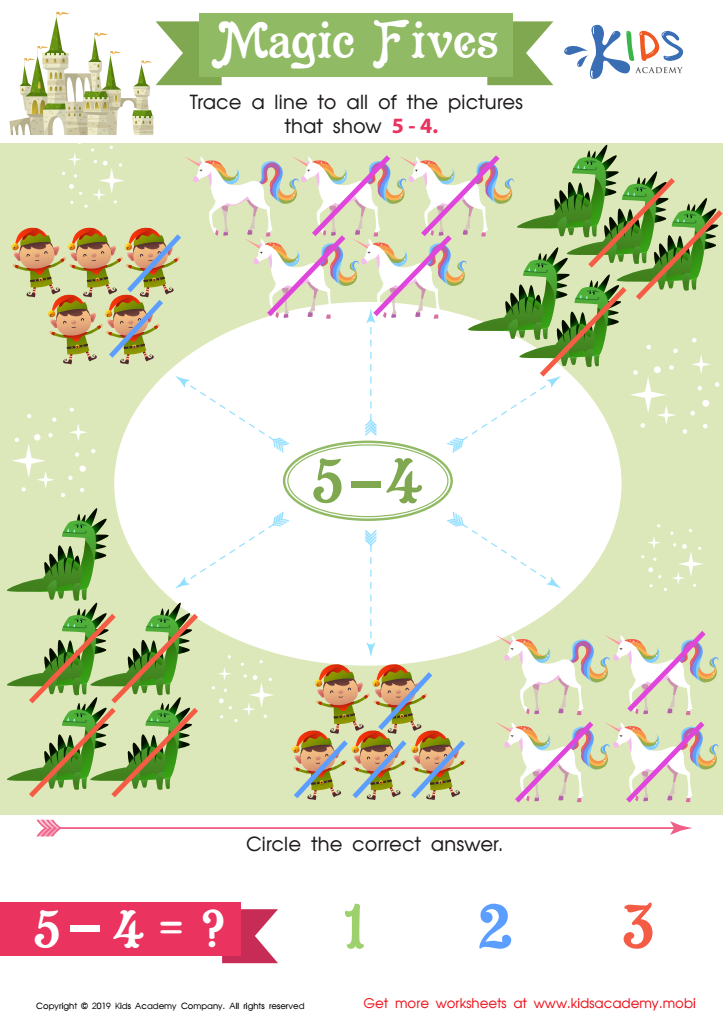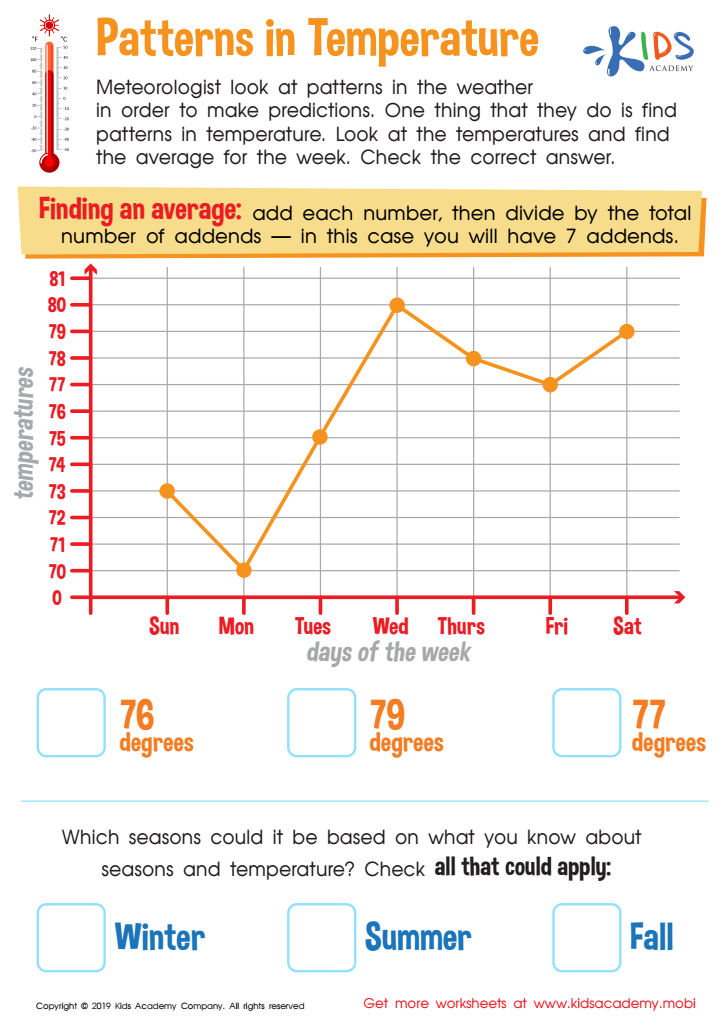Understanding patterns Normal Worksheets for Ages 4-8
10 filtered results
-
From - To
Explore our "Understanding Patterns Normal Worksheets" designed for children ages 4 to 8, available at Kids Academy. These engaging worksheets help young learners recognize, create, and extend patterns, fostering critical thinking and observational skills. Through interactive activities featuring colorful visuals, kids will develop their ability to identify sequences in shapes, colors, and numbers. Whether in the classroom or at home, these resources empower children to grasp essential math concepts while having fun. Perfect for teachers and parents seeking to enhance their child’s learning experience, our worksheets provide a solid foundation in pattern recognition that will benefit them as they progress in school.


Furniture Shop Worksheet


Addition: Space Math Worksheet


What's the Rule Worksheet


Find the Last! Worksheet


Magic Fives Worksheet


Patterns in Temperature Worksheet


Boomerang Addition Worksheet


Great Wall Math Worksheet


Multiplying 5’s: Telling Temperature Part 2 Worksheet


Multiplying 9’s Montgomery Bus Boycott Worksheet
Understanding patterns is a foundational concept in early childhood education, particularly for children aged 4-8. Parents and teachers should care about this because recognizing and creating patterns lays the groundwork for critical cognitive skills and mathematical reasoning. When children learn to identify and predict sequences, such as colors or shapes, they develop analytical thinking, which is essential for problem-solving across various subjects.
Furthermore, grasping patterns contributes to literacy development. Language often involves recognizing patterns in phonetics and sentence structure. As children gain confidence in spotting patterns, they also enhance their ability to communicate and understand complex ideas.
Additionally, engaging with patterns is a fun and interactive way to foster a child’s curiosity and creativity. It encourages experimentation and exploration, leading to deeper learning experiences. Activities that involve patterns can be easily integrated into everyday life, from cooking and arts and crafts to games and music, making learning holistic and enjoyable.
Finally, understanding patterns can promote personal organization and planning skills as children grow. Overall, prioritizing pattern recognition ensures a well-rounded educational foundation that supports various aspects of learning and development. Parents and teachers play a crucial role in nurturing these skills, fostering a love for learning in young children.
 Assign to My Students
Assign to My Students





















